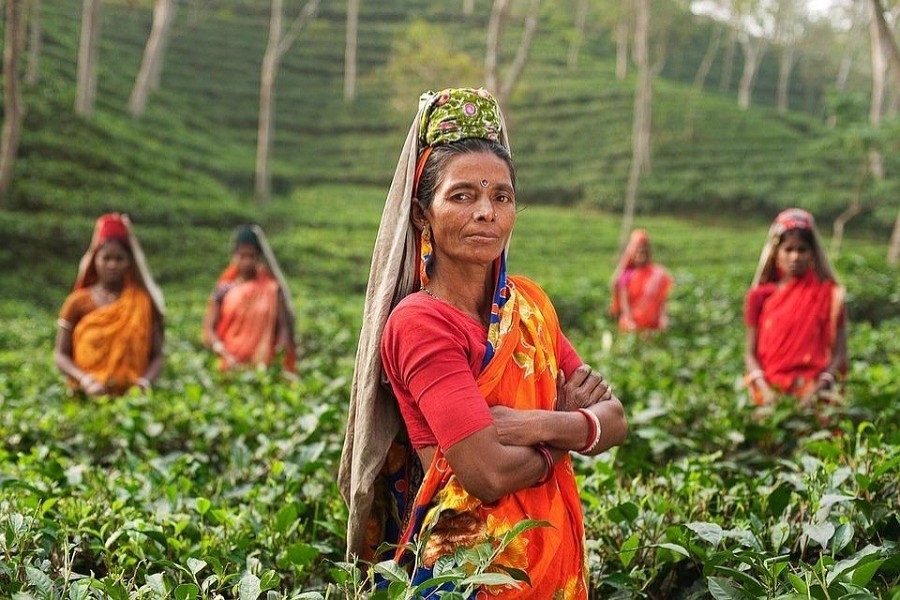The existence of the Bhojpuri population in Bangladesh may sound surprising to many, as there is no documentation of their living here.
Neither the Wikipedia page for ‘Bhojpuri People’, which anybody can edit, has any mention of their ever living in this part of the world, nor does the government have any documentation acknowledging them as a separate racial group in Bangladesh.
The story of the Bhojpuri people has been mostly unheard of. Shanto Kairy, a Bhojpuri- Bangladeshi, as well as a researcher of Bhojpuri people in Bangladesh, has shared with this writer about the Bhojpuri people. Also a former faculty at the Independent University of Bangladesh, he is currently pursuing higher studies at the Oklahoma State University in the US.
The Bhojpuri people mostly inhabit the Bhojpur-Purvanchal regions of India, currently divided between Western Bihar and Eastern Uttar Pradesh. Their mother tongue is Bhojpuri, a language considered one of seven main Hindi dialects along with Haryanvi, Braj Bhasha, Kannauji, Bundeli, Bageli, Awadi and Chhattisgarhi.
The Bhojpuri migration began between 1825 to 1870 with the advent of tea plantations in Sylhet and Assam. The introduction of plantation in the Indian subcontinent by British traders dates back to The East India Company‘s export endeavours in the 18th century. The Company traded British woolens and Indian cotton for Chinese tea.
The Indian black tea took the British market by storm as a substitute of beer and other alcoholic beverages.
Tea plantation in India's Assam dates back to 1839. As the numbers of plantations grew in the subsequent years, so did the demand for cheap labour.
Local Sylhetis were not much interested in the tea business, and so cheap labourers were brought to the plantations from North India, Bihar and Orissa. Among them were the Bhojpuri people from North India and Bihar.
Water has always been scarce in the Bhojpur-Purvanchal region; even the Ganges is shallow there. Lack of water hindered irrigation, so agriculture was insufficient to sustain livelihood.
That, coupled with the mounting torture inflicted upon them to pay excessive taxes by the British East India Company, was the main driving force behind this migration. They were tempted into working by tales of golden leaves amidst green hills, where their job would be to collect those gold leaves.
However, what awaited them was a hostile jungle full of wild animals, insects, diseases, and hunger. It was nothing short of slavery, and this continued through generations.
“The Bhojpuri people along with the other tea workers tried to go home,” Shanto said, “but the British did not allow them to leave. They killed hundreds of workers along with other tea workers, and there is not a single memorial for the massacre.”
The massacre he was referring to is the ‘Mulluk Chalo Movement’ or ‘Chargola Massacre’ that occurred on the night of the 20th May, 1921, when thousands of tea workers rebelled and walked hundreds of miles to Chandpur to board steamers to return to their native lands.
The British suppressed the movement by indiscriminate killing of the workers of all ages. There is no estimate of how many workers died on that night.
“The situation has not changed much after independence,” Shanto claimed, “as the Bhojpuri people have been secluded and forced to work in the plantations like the colonial times.”
The education rate is quite low among the Bhojpuri people in Bangladesh. Literacy rate was abysmal in the older generations, but now the situation has improved a bit.
Most of the Bhojpuri children study up to class five at local primary schools and then join their parents in the plantations. A lucky few can reach the graduate level – a number of Bhojpuriya are studying in the University of Dhaka and the Shahjalal University of Science and Technology.
“There are about one hundred thousand Bhojpuriyas in our country,” estimated Shanto.
“Almost ninety-nine per cent is employed in the tea plantations. Others are scattered across Dhaka, Mymensingh, Kishoreganj, Narayanganj, Ishwarganj, and Shyamganj.”
“The Bhojpuri people practise intermarriage. The society is caste-based, but the division is not strict. The government put the community into the scheduled caste in 2013, but the Bhojpuriyas are not the ‘dalits’ in religious sense. Different ethnic minorities are what the Bhojpuriyas really are,” Shanto said.
According to Shanto, Bhojpuri culture, found in Uttar Pradesh, is mostly intact. Their mother tongue is Bhojpuri, and they prefer roti as the staple meal.
Their festivals and religious customs are just like the Bhojpuriyas in North India, and they have adopted Durga Puja from the Bengalis.
Surja Puja is a unique custom, which is not practised by Bengali Hindus. There is a custom where Ramayana is recited at one’s house, and the whole locality gathers to listen to the recitation.
The application to acknowledge Bhojpuri people as a separate ethnic minority in Bangladesh has been rejected by the government several times, Shanto told this writer.
The country needs to accept Bhojpuri people as one of its own, and make amends for them and for all the wrong treatments they had to face. A community living without the bare minimum of living standard is, in no way, good for the country’s social and economic growth.


